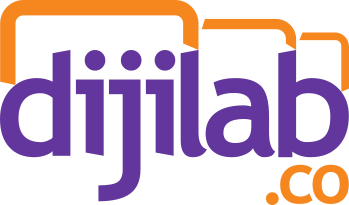How to Increase Your Conversion Rate?
Conversion rate…it might sound like some sort of religious metric, but in reality, it’s one of the best ways to measure the performance of your advertising campaigns. Conversion is a key element in your paid search strategy. If you’re not actually turning lookers into buyers at a high rate, what are you advertising for?
In this article, we’re going to discuss what the conversion rate is and how to improve it.
Unlike click-through rate, conversion rate tells you what percentage of your traffic is actually doing what you want them to do. You can buy all of the clicks you want, but if those clicks don’t convert…something is wrong.
Across industries, the average landing page conversion rate was 2.35%, yet the top 25% are converting at 5.31% or higher. Ideally, you want to break into the top 10%. To put it simply, your conversion rate is the percentage of visitors to your website or landing page that convert. Depending on your business goals, a “conversion” could be almost anything, but here are a few common types of conversions:
- Making a purchase
- Submitting a form
- Calling your business
- Engaging with you ronline chat
- Signing up for a subscription
- Registering on the site
- Downloading something
- Using something (software, app)
- Upgrading their service
- Engaging with your site in some way
Knowing what a conversion rate is and how to track it is one thing, but what do you actually do with your conversion rate data? More importantly, how do you improve your conversion rate?
Conversion Rate Optimization
Conversion Rate Optimization (CRO) is the process of optimizing your landing page and website to produce more conversions from your traffic! If you’re going to pay to get traffic to your site, you want to send them to a page that is designed to sell. Insanely focused and strategic landing page optimization brings 3-5x the conversions and improves lead quality.
1-Testing Your Site
Create A Dedicated Landing Page
In order to create well-designed website, first area you should look into is landing page. You can make small but effective changes in front type, spacing, button color, image, etc. You will see they can seem more impactful than they really are.
Come Up With a Hypothesis
We had to think outside the box and come up with something different and unique; something more tangible and compelling. All good CRO tests start with a hypothesis.
But, to put your hypothesis together, you’ll have to make some educated guesses about which site elements have the biggest impact on your conversion rate and profitability. Here are a few areas you can look at first:
Headline: Your headline needs to sell and sell hard.
Offer: Your audience isn’t you, so they don’t always respond the way you think they will. Try different descriptions and layouts to see what resonates best with your prospective clients.
Call-to-action: Like your offer, the right call-to-action(CTA) may take a few tests to discover. Try more descriptive CTAs or different button sizes.
Media: Sometimes a new picture or video can make all the difference.
Once you’ve got a hypothesis and two page designs to assess, all you have to do is get your test running
A/B Test
A/B testing is the easiest and most effective way to to start doing CRO. To run an A/B test, all you have to do is set up two different variants of a page and split your traffic between them. Half of your traffic goes to variant A and half goes to variant B.
Testing Your Traffic
In addition to testing your website, another great way to improve your conversion rate is to test your traffic and to get meaningful data. This is important, because the wrong traffic won’t convert…even on the perfect page.
So, how do you make sure you’re sending the right traffic to your landing page?
You should first take the time to do a little research on your target audience.
The content of your marketing material should match the content of your landing page.
The more audience-specific you can make your ads and landing page, the more likely they are to convert.
Create a testing budget for exploring new traffic or targeting opportunities and focus most of your budget on known winners.
Finally, you should learn to use “Remarketing” as a CRO Tool. On average, 96% of the people who visit a website will leave without ever converting to a lead or sale. Remarketing helps you get in front of these people with targeted, relevant messaging as they take part in other activities around the web, like email, watching YouTube videos, using social networks or searching for information.
Dijilab Education
Dijilab Education
At Dijilab, we take a sincere interest in your professional development and growth. We will help you expand the scope of your ambitions and provide you with the skills and confidence to turn them into reality. helps you to expand your current knowledge and explore the latest digital marketing trends while developing your own concepts of digital marketing.
Plus, you will learn through a practical and interactive teaching approach, discussing pioneering changes while developing your understanding of digital marketing concepts.
With Specialized Program in Dijilab
You will be able to;
-Design a Google Adwords campaign, defining which network is most suitable for your advertising objectives and with which segmentations. You will also need to design ads according to recommended best practices.
-Define the strategies, objectives and tactics of Relationship Marketing and how this is linked to the corresponding Digital Marketing ecosystem.
Below, you can review Dijilab’s course content on Digital Marketing, Social Media Ads and Web Analysis.
Digital Marketing Fundamentals
– Introduction to Digital Marketing and Basic Concepts
– Digital Media etc. Traditional Channels
– Digital Marketing Ecosystem
– Strategic Approaches in Digital Marketing
– Basic Advertising Models
– Multi-Channel Digital Marketing Management
– Target Audience and Competitor Analysis in Digital
– Consumer Segmentation
– KPI Determination and Introduction of Key KPIs
Digital Media Planning and Optimization
– Introduction to Content: Evolution of Content from Traditional to Digital
– Using Marketing Strategies in Digital
– Highly Interactive Digital Content Formats
– Best Tools for Trend Tracking
– Nutritional Resources for Content Continuity
– Creative Content Suggestions for Every Medium
– Finding Ideas and Positioning Methods
– Tips for Writing Popular Blogs
– Content Title Finding Techniques
– Practical Content Creation Tools
Web Analytics
-İntroducing to Web Analytics.
-Web-based Analytics and software products.
-Being aware of the different analytics tools.
-Learning Affiliate, Internet, and Referral Marketing.
-Understanding advertising using analytics.
Search Engine Optimization (SEO)
– Introduction to SEO
– SEO Definitions and Usage Reasons
– Google’s Page and Content Evaluation
– White Hat and Black Hat SEO
– Basic SEO Techniques
– Keyword Analysis and Correct Keyword Goals
– Backlinks
– SEO and Content Relationship
– Frequently Used SEO Tools and Services
– Basic SEO Mistakes
Google Ads
– Google Ads Account Setup
– Billing
– Campaign Types
– Keywords
– Ads and Extensions
– Google Auction and Quality Score
– Shopping Ads
– Formats and Targeting in Display and Video Ads
– Conversions
– Bid Strategies
Google Tag Manager
-What is Google Tag Manager?
-How to Set Up a Google Tag Manager Account
-Tags, Triggers and Variables
-How to Create a Tag
-Testing with GTM and Debugging Your Tag
-Best Extensions for GTM
Google Search Console
-Excellent Understanding of Google Search Console
-Registering Webiste for Search Console
-How to submit Sitemaps to Google Search Engine
-Monitoring website performance and inbound/outbound links
-Analyze existing or new keywords performance
-Improve user experience and monitor traffic
Google Analytics
– Google Analytics Setup
– Measurement Strategy and Implementation Planning
– Major Terms in Google Analytics
– Google Analytics Account / Property / View Structures and Settings
– Property and View Configurations
– Enhanced E-commerce Module Installation and Interpretation
– Basic and Customized Google Analytics Reports
– Integration Control Methods
– Studies and Interpretations on Google Analytics
Facebook and Instagram Ads
-Introduction to Facebook Advertising
-Using Business Manager
-Facebook and Instagram Ad Models
-Setting Targeting Options and Campaign Goals
-Bid Systems and Procurement Models
-Budget Planning
-Creating a Custom Audience
-Facebook Pixel Creation and Placement
-Facebook Conversion Creation
-URL Parameters and Pixel Tracking
-Creating Facebook Catalog
-A/B Tests in Facebook Ads
-Tips and Optimization for Effective Ads
-Ad Metrics and Reporting
-Facebook Ad Creatives
Benefits Of The Course
– You will understand the complete ecosystem of Digital Marketing.
– You will have the basic knowledge required for digital marketing and social media expertise.
– You will get comprehensive information about the digital marketing ecosystem, business models and technologies with current examples.
– You will be able to master tools such as Google Ads, Google Analytics, Facebook Ads.
– You will learn about social media management, SEO style, community building, effective advertising and campaign creation, crisis management, panel management.
– You gain categories skills in systematic, effective and result-oriented management of strategies.
– You will learn to monitor or control to take corrective actions.




